#raffaello sanzio
Text

The Transfiguration, Nicolas Beatrizet and Tommaso Barlacchi after Raphael, 1541
#art#art history#Nicolas Beatrizet#Tommaso Barlacchi#Raphael#Raffaello Sanzio#religious art#Biblical art#Christian art#Christianity#New Testament#Gospels#Transfiguration#Transfiguration Sunday#Renaissance#Renaissance art#Italian Renaissance#Cinquecento#Italian art#16th century art#print#engraving#Metropolitan Museum of Art
86 notes
·
View notes
Text

Raphael - Theological Virtues. 1507
201 notes
·
View notes
Text
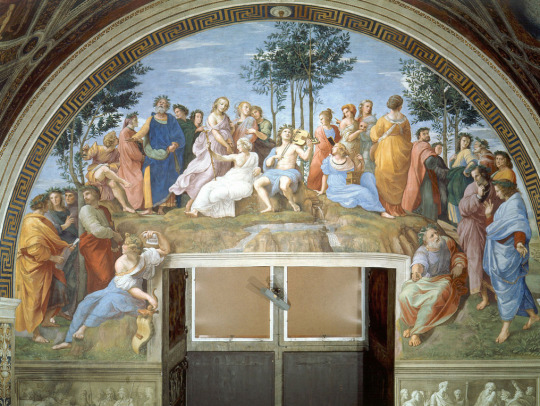


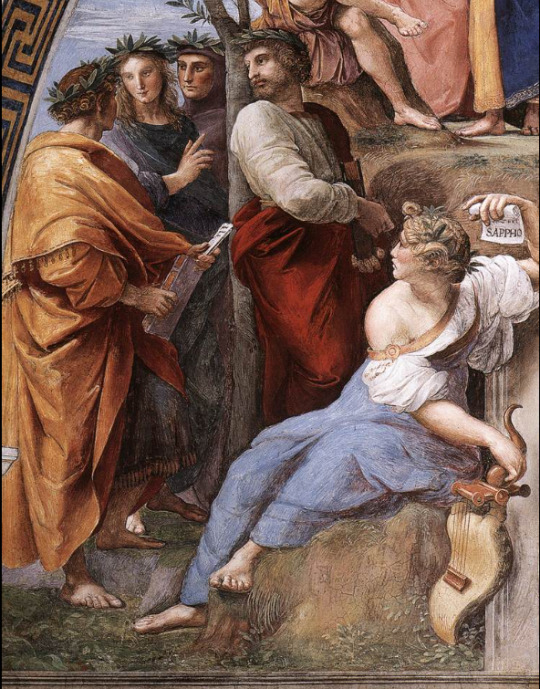
The Parnassus, Raffaello Sanzio, 1509-11
#art history#art#italian art#aesthethic#16th century#greek mythology#ancient greece#parnassus#raphael#raffaello sanzio#poets#vatican museums#musei vaticani#sappho#apollo#virgil#dante alighieri#homer
70 notes
·
View notes
Text
Simple Art Posters & Canvas Prints

100+ Famous Artists of All Time
#Jenny Saville#Georges Seurat#Rembrandt#balthus#El Greco#Diego Velázquez#Peter Doig#James Little#Paul Cézanne#Robert Motherwell#Thomas Gainsborough#Amedeo Modigliani#Banksy#Ingres#Giorgio de Chirico#Masaccio#NICOLAS POUSSIN#Jean Arp#RAFFAELLO SANZIO#Jasper Johns
64 notes
·
View notes
Text

Raphaël (Raffaello Sanzio) (Italian, 1483-1520)
The Healing of the Lame Man for the Sistine Chapel, ca.1515-16
This scene depicts the first miracle performed by Peter – an event which symbolises his spiritual healing power and conversion of the Jews to Christianity.
Peter, in the centre of the painting wearing a blue cloak and yellow tunic, holds the hand of a disabled man and asks him to rise and walk. The man is instantly cured and is able to stand and follow him into the Temple (Acts 3:1-8). The miracle takes place in front of the Beautiful Gate (Porta Speciosa) of the Temple in Jerusalem (a temple with Solomonic columns) – the most sacred place in Judasim.
#Raphael#Raffaello Sanzio#italian art#italian#italy#the healing of the lame man#art#fine art#european art#classical art#europe#european#oil painting#fine arts#europa#mediterranean#christian art#southern europe#catholic art#christianity#catholicism#saint peter#saint john#advent calendar
85 notes
·
View notes
Text
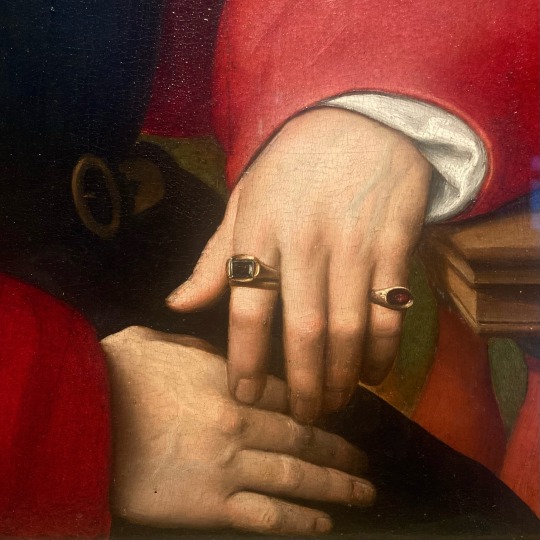

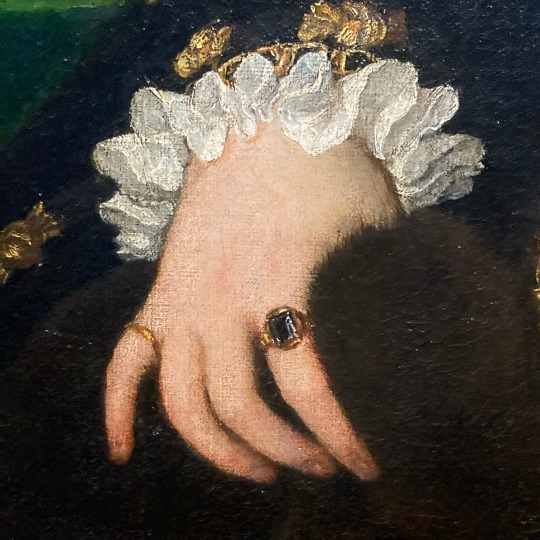



Rings in 16th century paintings
Raffaello Sanzio, Ritratti di Agnolo Doni e Maddalena Strozzi (c. 1504-1506)
Tiziano Vecellio, Ritratto di Eleonora Gonzaga della Rovere (c. 1537)
Agnolo Bronzino, Ritratto di giovane donna con libro (c. 1545)
Agnolo Bronzino, Ritratto di Lucrezia Panciatichi (c. 1541)
#raffaello sanzio#raphael#tiziano#titian#bronzino#16th century#16th century art#1500s art#16th century fashion#uffizi#since I'm always here I might as well get some tumblr posts out of it
53 notes
·
View notes
Text

#peoplematchingartworks#raffaello sanzio#gemäldegalerie#stefandraschan#photography#contemporaryart#berlin
27 notes
·
View notes
Text
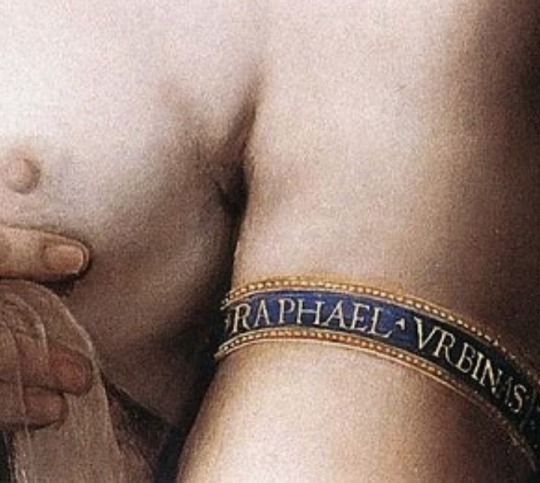
La fornarina [Details]
Raffaello Sanzio
40 notes
·
View notes
Text

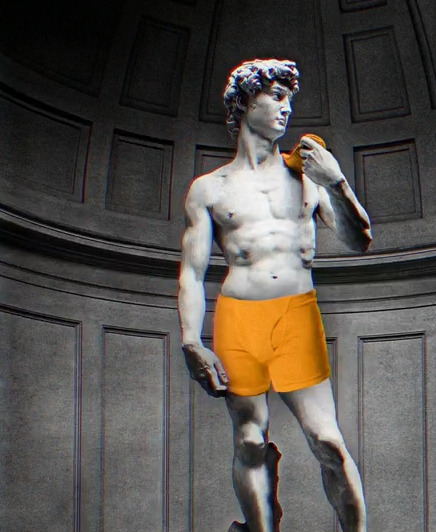


24 notes
·
View notes
Text
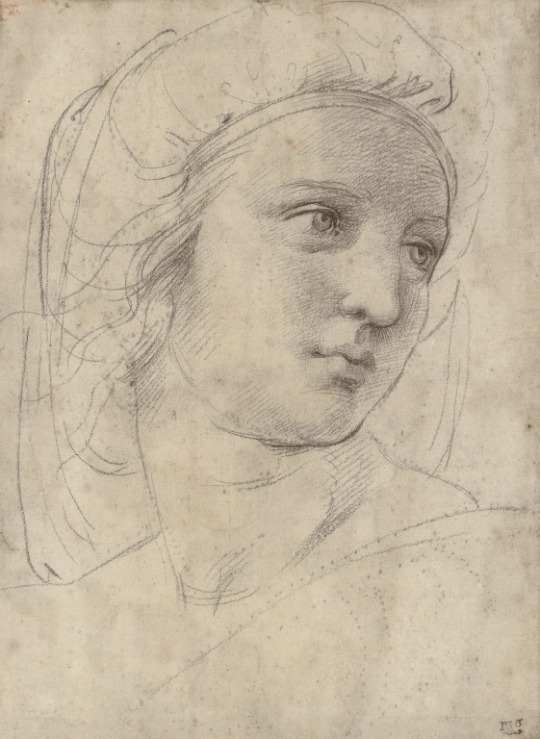
Raphael
Head of a Muse. ca. 1510
#raphael#raffaello sanzio#drawing#renassaince#art study#old masters#old art#italian artist#private collection
17 notes
·
View notes
Text

Ezekiel's Vision, Raphael, 1518
#art#art history#Raphael#Raffaello Sanzio#religious art#Biblical art#Christian art#Christianity#Old Testament#Hebrew Bible#Ezekiel#Book of Ezekiel#Renaissance#Renaissance art#Italian Renaissance#High Renaissance#Cinquecento#Italian art#16th century art#oil on panel#Galleria Palatina
176 notes
·
View notes
Text

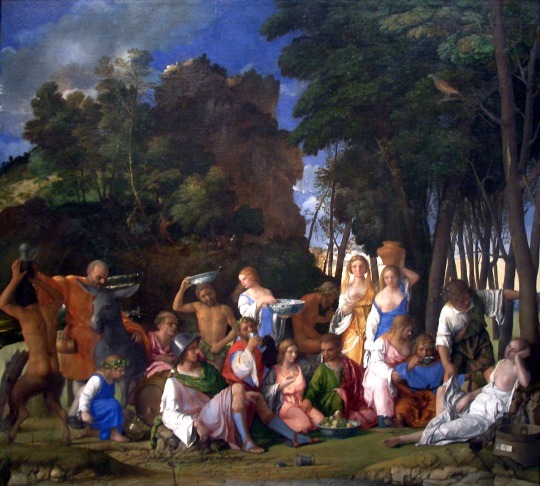
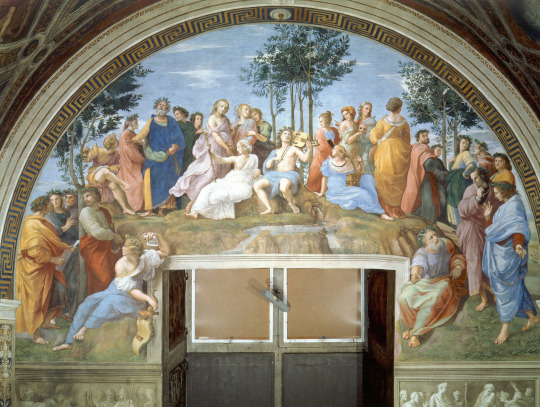
SENSI DELL'ARTE - di Gianpiero Menniti
LA VIOLENZA DELLA TRADIZIONE
Non è mai semplice, per il nostro tempo, comprendere l’opera d’arte che risale nei secoli, la sua origine, la sua ragione, la sua finalità.
Si dimentica che l’artista solo tra Ottocento e Novecento ha realizzato la propria libertà d’espressione e soprattutto di scelta dell’oggetto rappresentato.
E si tralascia anche la sottile distanza che ha sempre connotato il contenuto, frequentemente richiesto e riproposto, dallo stile della composizione: il medesimo “oggetto” muta attraverso pochi cenni delle figure, la scena, lo sfondo, la luce, i colori.
Così, l’oblio della memoria consuma anche il vero significato della tradizione: non pedissequa ripetizione dell’immutabile ma sempre il riflesso di un’interpretazione.
L’interpretazione configura il tradimento: la stessa etimologia del tardo latino lascia scivolare la “consegna” in un passaggio che altera di per sè la cosa rimessa.
Si tratta di un tradimento necessario, pena la fine stessa dell’espressione d’arte.
Ma un tradimento che poggia le sue radici su un’interpretazione che precede: ermeneutica di un’ermeneutica.
Non importa che sia un testo letterario o un testo pittorico: lo sguardo abbraccia sempre un’immagine.
L’origine scompare.
Così, al “Parnaso” (1495 - 1497, Louvre, Parigi) di Andrea Mantegna (1431 - 1506) che trasuda esibita regalità, si contrappone il “Festino degli dei” (1514, National Gallery of Art, Washington) di Giovanni Bellini (1429 - 1516) dal quale emerge il riflesso sorprendente di una nascosta “ricreazione” delle figure divine: appartate, finalmente lontane dagli occhi mortali, abbandonano la loro funzione regale, la partecipazione alle vicende umane fino a raccogliersi nella modestia dei gesti.
Pochi anni dividono questi due dipinti.
Eppure, lo spazio temporale non giustifica l’abisso della dissonanza.
Tra i due, il “Parnaso” (1510 - 1511) della Stanza della Segnatura (Musei Vaticani), l’affresco realizzato da Raffello (1483 - 1520) che mostra dei e mortali uniti nella celebrazione della poesia.
Ecco l’anello di congiunzione.
Ma è di nuovo un tradimento.
Ancora la violenza dell’interpretazione.
Il trascendimento della tradizione è, infine, il segno di un passaggio d’epoca.
Che fa violenza al passato.
A similitudine del processo naturale di nascita e di morte.
Nulla permane.
Niente è mai assoluto.
Nella vita come nell’arte.
23 notes
·
View notes
Text

Christ blessing, Raffaello Sanzio, 1502-04
#art history#art#italian art#aesthethic#painting#16th century#raffaello sanzio#raphael#christ#jesus#christ blessing#rinascimento#pinacoteca tosio martinengo
34 notes
·
View notes
Text


"Il Parnaso" from Raffaello Sanzio (1511). Vatican Palace.
This fresco is a depiction of the Mount Parnassus, that was the home of the Muses, according to greek myths.
Details of the greek muses:
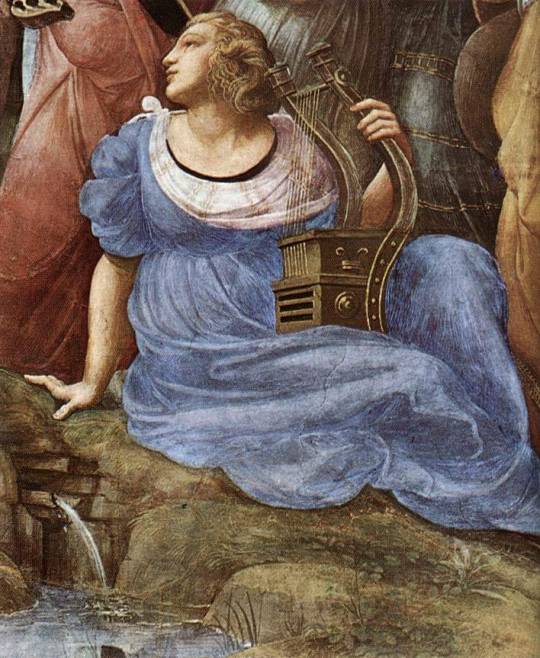
Terpsichore, goddess of dancing.
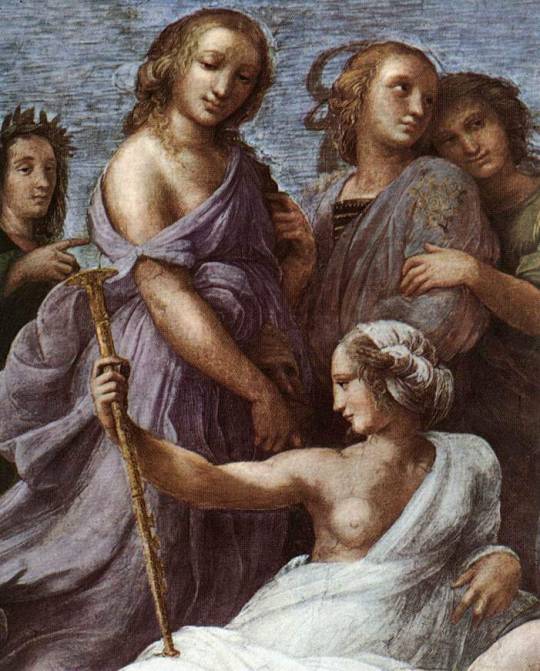
Calliope, goddess of epic poetry.
Euterpe, goddess of music.
Erato, goddess of love poetry.
Talia, goddess of comedy.
#raffaello sanzio#italy#artedit#italian art#vatican#muses#greek mythology#greek myth art#italian artist#italian renaissance#Vatican palace#fresco#art history#art#greek muses#calliope#talia#mythology#greek myths#myths#myth art#mythical creatures#ancient myths#greek myth aesthetic#ancient mythology#1500s
64 notes
·
View notes
Text
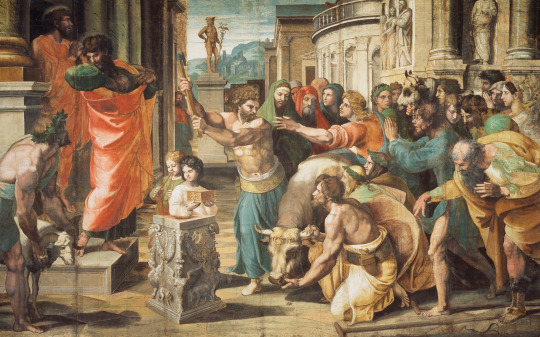
Raphaël (Raffaello Sanzio) (Italian, 1483-1520)
The Sacrifice at Lystra for the Sistine Chapel, ca.1515-16
The apostles Paul and Barnabas continue their mission in the city of Lystra (now Hatunsaray in modern Turkey), where the inhabitants mistake them for pagan gods and, following their tradition, prepare to offer them a sacrifice.
Paul, wearing his red tunic, and Barnabas, standing behind him, heal a lame man who is then able to walk. Witnessing this miracle, the city's inhabitants mistake Paul for the god Hermes (corresponding to the Roman god Mercury) and Barnabas for Zeus (corresponding to the Roman god Jupiter) and prepare a sacrifice to honour them.
Following their beliefs, the people of Lystra start preparing a sacrifice to honour the two apostles. A man with an axe, at the centre, prepares to strike a bull before the altar; on the left St Paul turns away from the sacrifice in disapproval and tears his robe in anger, while Barnabas prays for the crowd to stop (Acts 14:8-18).
#raffaello sanzio#raphael#italian art#italian#christian art#christian#christentum#christianity#art#catholic art#catholicism#european art#fine art#classical art#europe#european#oil painting#fine arts#europa#mediterranean#saint paul#advent calendar
71 notes
·
View notes
Text

Raffaello Sanzio, La Fornarina, 1520 (detail)
VS
Miuccia Prada and Raf Simons, Prada Spring Summer 2022 Ready-to-Wear Collection
#raffaello#raffaello sanzio#la fornarina#paint#painting#miuccia prada#prada#raf simons#ss 2022#fashion#clothing#palazzo barberini#Gallerie nazionali d'arte antica#fashion week#milano fashion week#milan fashion week#Spring Summer 2022#detail#arm cuff
19 notes
·
View notes